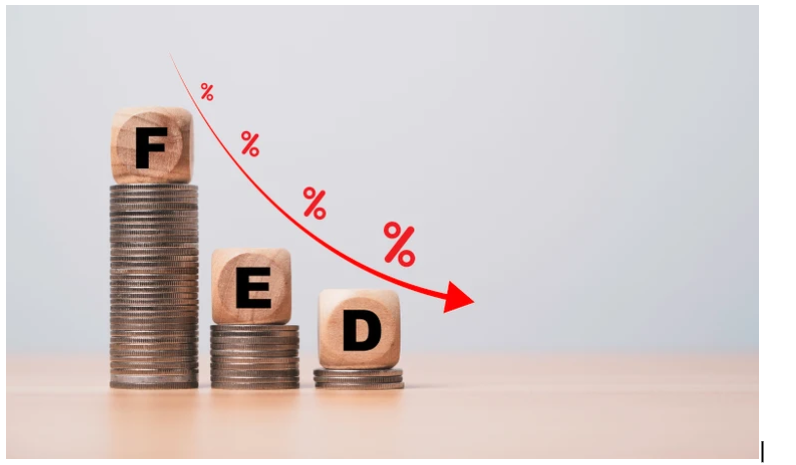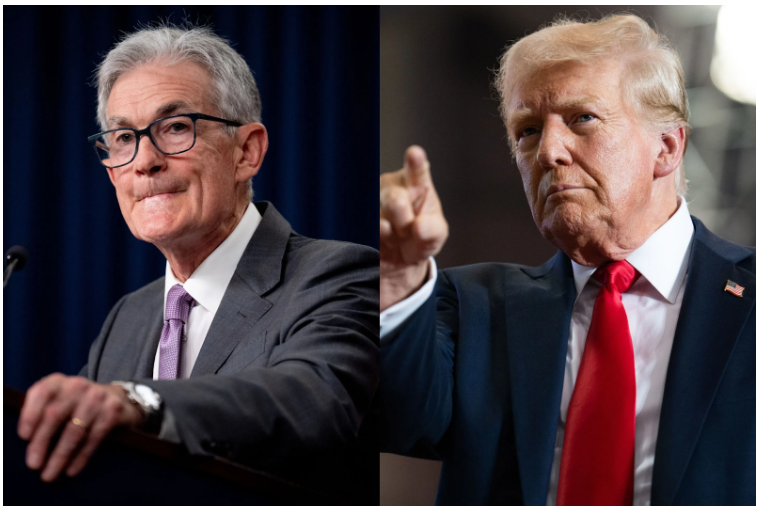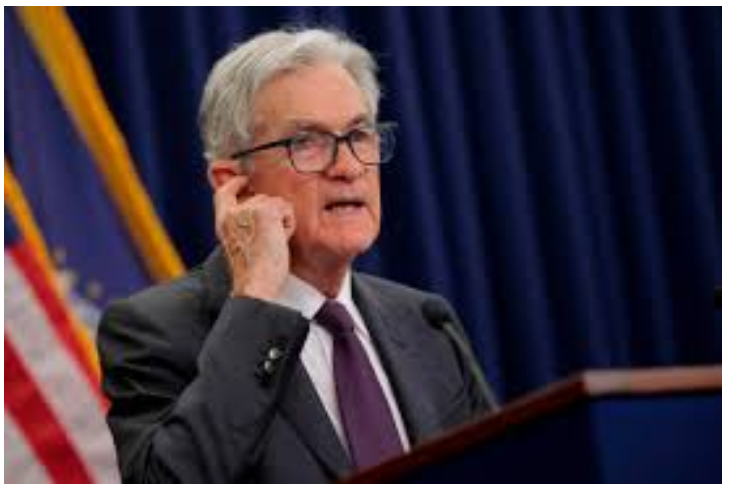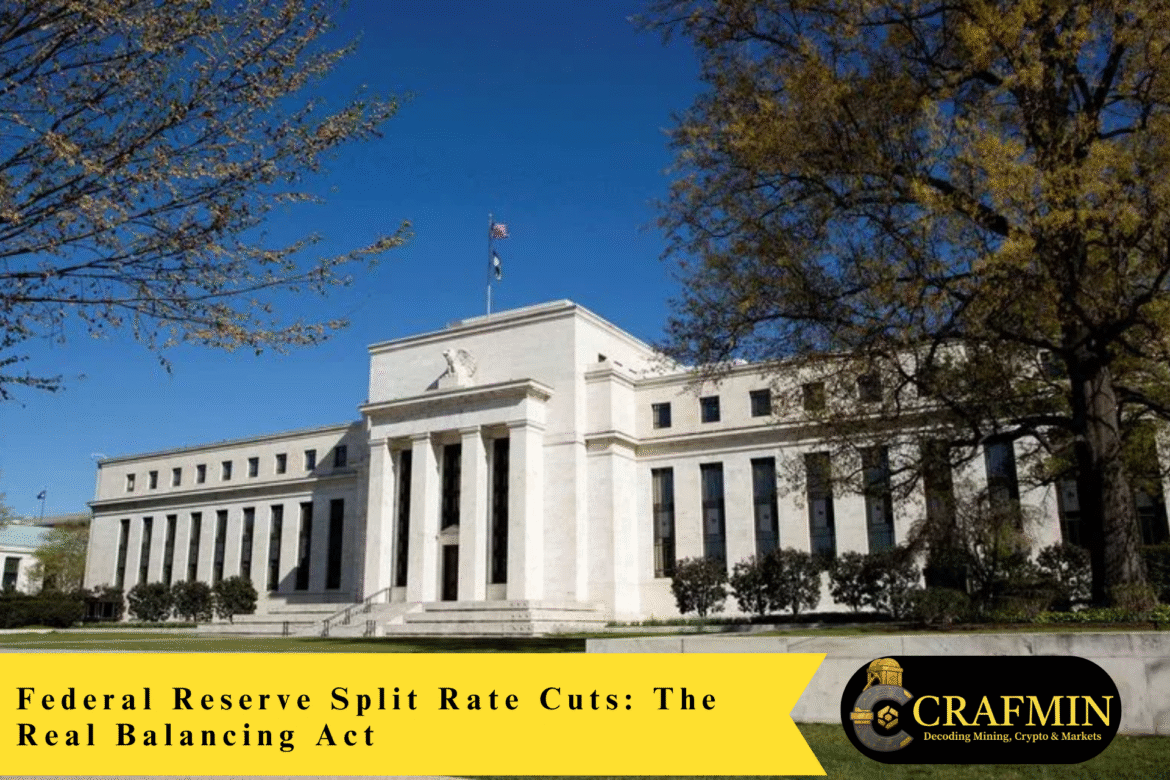The Federal Reserve’s split rate cuts plan intends to reduce its standard rate by 25 basis points this week, bringing it down to 4.00 per cent. Although traders have already acknowledged the change, the principal point of attention is still the communication from the central bank. The Wednesday decision will be made amidst contradictory economic indicators and increasing political conflict surrounding the next Fed rate cut timing. The Fed plans a 25 basis point rate cut on Wednesday.
The Fed plans a 25 basis point rate cut on Wednesday.
Why Are the Federal Reserve Split Rate Cuts So Crucial?
Recently, mixed signals from the Fed minutes rate cuts indicate a lack of consensus among the policymakers. Some argue that the slow growth of jobs, along with less credit demand, calls for a faster easing.
Meanwhile, others think that inflation is still a problem and that cutting rates too soon could result in losing the trust of the markets. This division by the means of opposing banks has turned into a glorious and unyielding issue of superiority and power, showcasing the complexity of the Federal Reserve split rate cuts.
What Makes the Fed’s Decision Politically Sensitive?
Politics has interfered with monetary matters once again. The Trump administration has openly stated its preference for looser monetary policy before the 2026 presidential election. A potential rate cut during this week will raise eyebrows in both the Washington and Wall Street circles.
Therefore, Jerome Powell, the Fed Chair, has to be careful in his choice of words such that these will provide the market with a kind of reassurance while at the same time not making him appear to be influenced by politics. His credibility is at stake, and he needs to demonstrate that the Fed is able to operate independently, notwithstanding the growing external pressure surrounding Federal Reserve split rate cuts and the next Fed rate cut timing.
 Political pressure mounts as Trump administration pushes for pre-election rate cuts.
Political pressure mounts as Trump administration pushes for pre-election rate cuts.
Markets Want Certainty, Not Surprises
Investors are, however, not worried at all about the extent of the cut, and the very communication that comes after that is what they are more matter-of-fact about. Powell’s talk about inflation and growth will influence attitudes towards future easing. If he is sure, the risk assets like stocks could benefit from a rally.
A hesitant message, on the other hand, could signal to the markets that inflation is still the central anchor, thus reminding them about it. In this context, the speculation of the next Fed rate cut timing is the main reason for the volatility in the global markets. The uncertainty is amplified by the ongoing Federal Reserve split rate cuts, which continue to influence market sentiment worldwide.
Fed Minutes Rate Cuts Signal Deep Divide
The Fed minutes rate cuts have shown vast differences between hawks and doves. Some see the economy as robust enough to postpone cuts, whereas others think current high rates are slowing growth.
The Fed has a tricky job since inflation is still over the 2 per cent limit. The situation regarding growth is no longer strong enough to be ignored but not weak enough to panic. This dilemma is uncertainty, which is alluded to in the policy discourse now, making the Federal Reserve’s split rate cuts the centre of global economic debate.
 With inflation above 2%, the Fed’s split rate cuts spark debate.
With inflation above 2%, the Fed’s split rate cuts spark debate.
What Happens If the Fed Misjudges The Cycle?
Either a premature or a postponed rate cut would turn out to be shots that would reverberate across the world. Early rate cuts would risk bringing inflation back, while a steady hand could easily lead to the death of a recovery.
Global markets will be closely observant of every Federal Reserve split rate cut action because it directly impacts the currencies, bond yields, and emerging markets. Therefore, the divide within the Federal Reserve on the issue of rate cuts has become a global matter, and it is fantastic through the influence of the confidence that it gave beyond the US borders. The next Fed rate cut timing will determine how investors position themselves amid uncertainty.
Independence Still On Trial
Powell’s decision, whatever it will be, will certainly put the Fed’s projection of independence to the test. Political considerations are now attached to every single basis point. The upcoming weeks will reveal if the most powerful central bank in the world can handle inflation, politics, and credibility all at the same time.
As the market waits for clarification, the next Fed rate cut timing continues to be the most disputed topic among economists and investors. The Fed minutes rate cuts further expose how divided the institution is, while the overall uncertainty around the Federal Reserve split rate cuts adds pressure to global financial stability.
Also read: Texas Breaks New Ground with State-Level Bitcoin Reserve
FAQs
Q1: What does “Federal Reserve split rate cuts” mean?
It indicates that there is a lack of consensus within the Fed about the speed of the interest rate cut, which is evident from the recent Fed minutes rate cut discussions.
Q2: Why are “Fed minutes rate cuts” important?
They offer a glimpse into the central bank’s internal debates and the likely path of its policy, helping analysts predict the next Fed rate cut timing.
Q3: How does the “next Fed rate cut timing” affect investors?
The timing has an impact on the global market’s mood, the value of currencies, and the direction of investments, all tied closely to the Federal Reserve’s split rate cut outcomes.
Q4: Is the Federal Reserve influenced by politics?
Although it is supposed to be independent, the pressure from the election year can lead to people thinking that the monetary policy is influenced by politics, especially regarding the Federal Reserve’s split-rate cut decisions.

